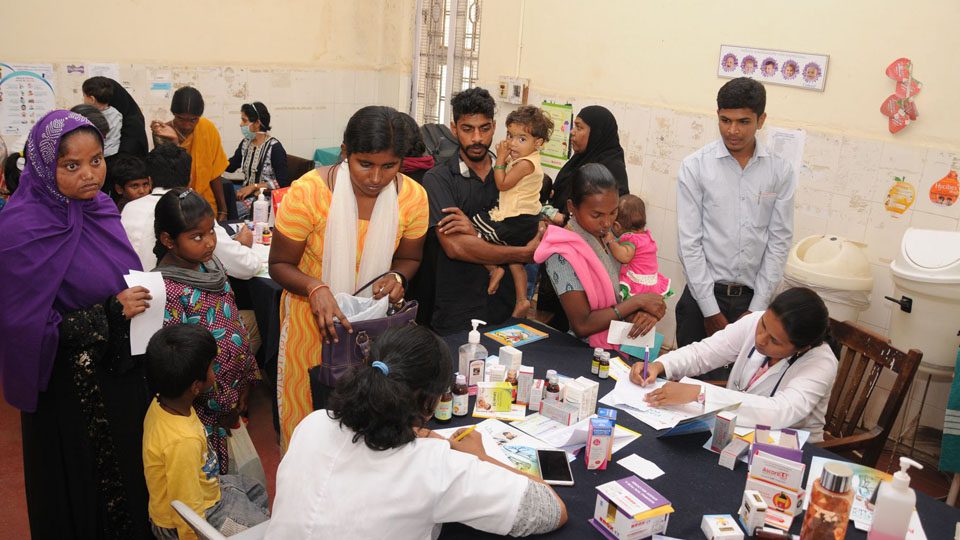Public health activists have been demanding that health should become an important political agenda and an issue of public debate. However, the Prime Minister successfully used the issue of stent price reduction during Bihar elections even though the prices were not brought down by the government. This was done after a court order in a case filed by advocate Birender Sangwan. The government has not taken any substantive action to streamline drug prices after the coronary stent price reduction. A report, for Different Truths.
It is an irony that healthcare has always been given a back seat in the priority list of successive governments. It has not been a public agenda either. Elections have many times been fought on trivial issues. Therefore, there is hardly a public outcry on health issues even during elections. Public reaction on the increasing cost of treatment is reflected in the form of violence against the doctors. But there is no in depth debate on health issues.
Public health activists have been demanding that health should become an important political agenda and an issue of public debate. However, the Prime Minister successfully used the issue of stent price reduction during Bihar elections even though the prices were not brought down by the government. This was done after a court order in a case filed by advocate Birender Sangwan. The government has not taken any substantive action to streamline drug prices after the coronary stent price reduction. But since then various public health activists have become more vocal and have come forward to raise issues of drug prices and budget allocation for heath.
To meet up the challenge of healthcare the government has come forward with the National Health Protection Scheme (NHPS). This is claimed to be the biggest ever health insurance scheme in the world. It will cover 10 crore families that is 50 crore people with a coverage of five lakh rupees for secondary and tertiary hospitalisation care. The NHPS will not cover the OPD care or the preventive healthcare. About 60% population will be kept out of any coverage benefit. Very little number of these left out population is affluent enough to afford out of pocket expenditure on health. Therefore, NHPS does nowhere meet the criteria of comprehensive universal health care. The social determinants of health like a supply of clean drinking water, adequate sanitation system, proper housing and nutrition, sufficient wages to meet the day to day needs and health education are not part of this scheme.
There is sufficient evidence to prove that the insurance companies’ primary motive is to earn the profit. It is presumed that since the number of insured is very large and at any given time very few people are hospitalised, this will give enough scope to the companies to reap profits. But if at any stage the companies find it to be unviable, they would not hesitate to pull out on one excuse or the other. If the premium is low then many of them may not to join the scheme at all.
As the scheme does not cover OPD care, the majority of patients will remain devoid of real benefit. Eighty percent of the time, the out-of-pocket expenditure of patients is on outpatient care, which is not covered under NHPS. It is also not clear whether post hospitalisation expenses will be met with by the insurance companies or by the patient. In many diseases, post-hospitalisation care is very high and lifelong. In any such scheme based on the insurance companies, the common experience is that patients have to struggle to get their dues from them.
In contrast, the Employment State Insurance Scheme (ESIS) is multidimensional social security scheme meant to provide socio-economic protection to employees in the organised sector against the events of sickness, maternity, disablement and death due to employment injury and to provide medical care to the insured employees and their families.
The scheme provides full medical care to the employee registered under the ESI Act, 1948 during the period of his incapacity, restoration of his health and working capacity. It provides financial assistance to compensate the loss of wages during the period of abstention from work due to sickness, maternity and employment injury. The scheme provides medical care to family members also.
ESI is a self-financing scheme. The ESI funds are primarily built out of contribution from employers and employees, payable monthly at a fixed percentage of wages paid. The State Governments also bear their share.
This scheme covers medical benefit, retirement benefit, sickness benefit, disablement benefit, dependent benefit, maternity benefit, confinement expenses, funeral expenses, unemployment allowance, vocational rehabilitation allowance etc. Thus it covers from OPD care to inpatient care to the post hospitalisation expenses. The ESIS could be a guiding scheme where the government directly imparts healthcare at various levels. This can be remodelled in the new form to cover all citizens. Division of share of employees, employers, self-employed and also an exemption of extremely poor socio-economic strata can be worked out in consultation with various stakeholders. This will eliminate the insurance companies whose entry in the health sector is only to make profits at the cost of public exchequer.
Dr. Arun Mitra
©IPA Service
Photo from the Internet





 By
By

 By
By
 By
By